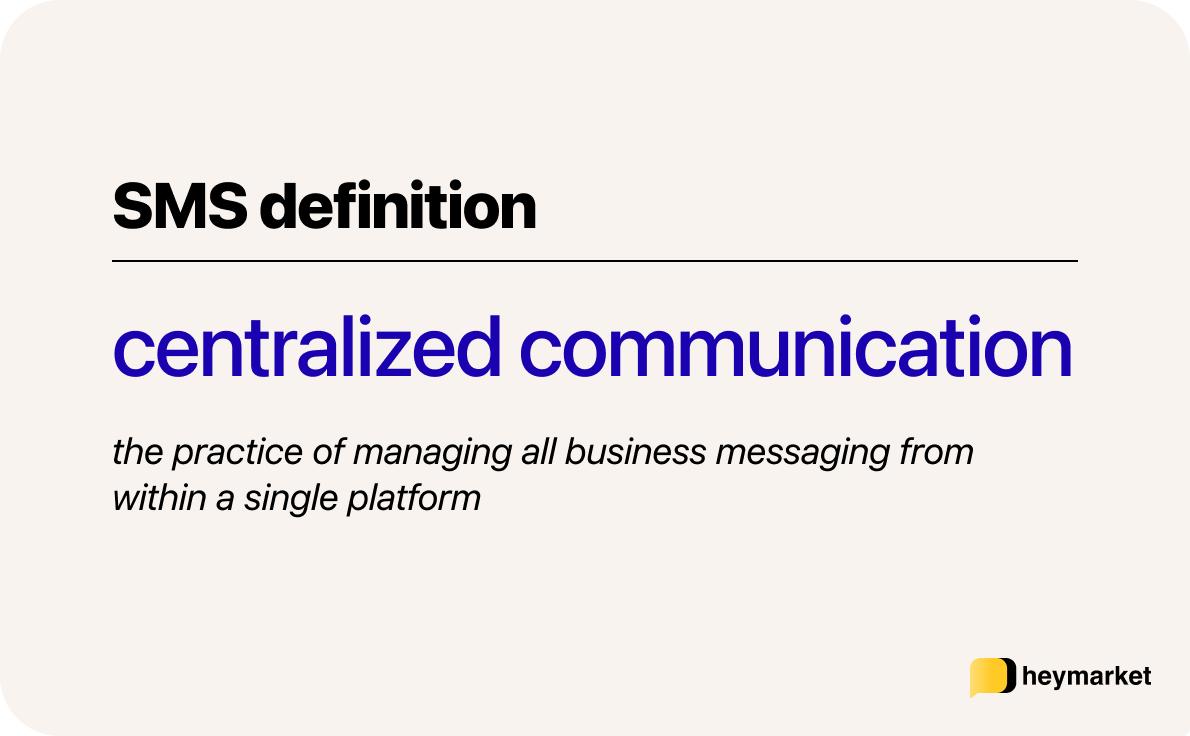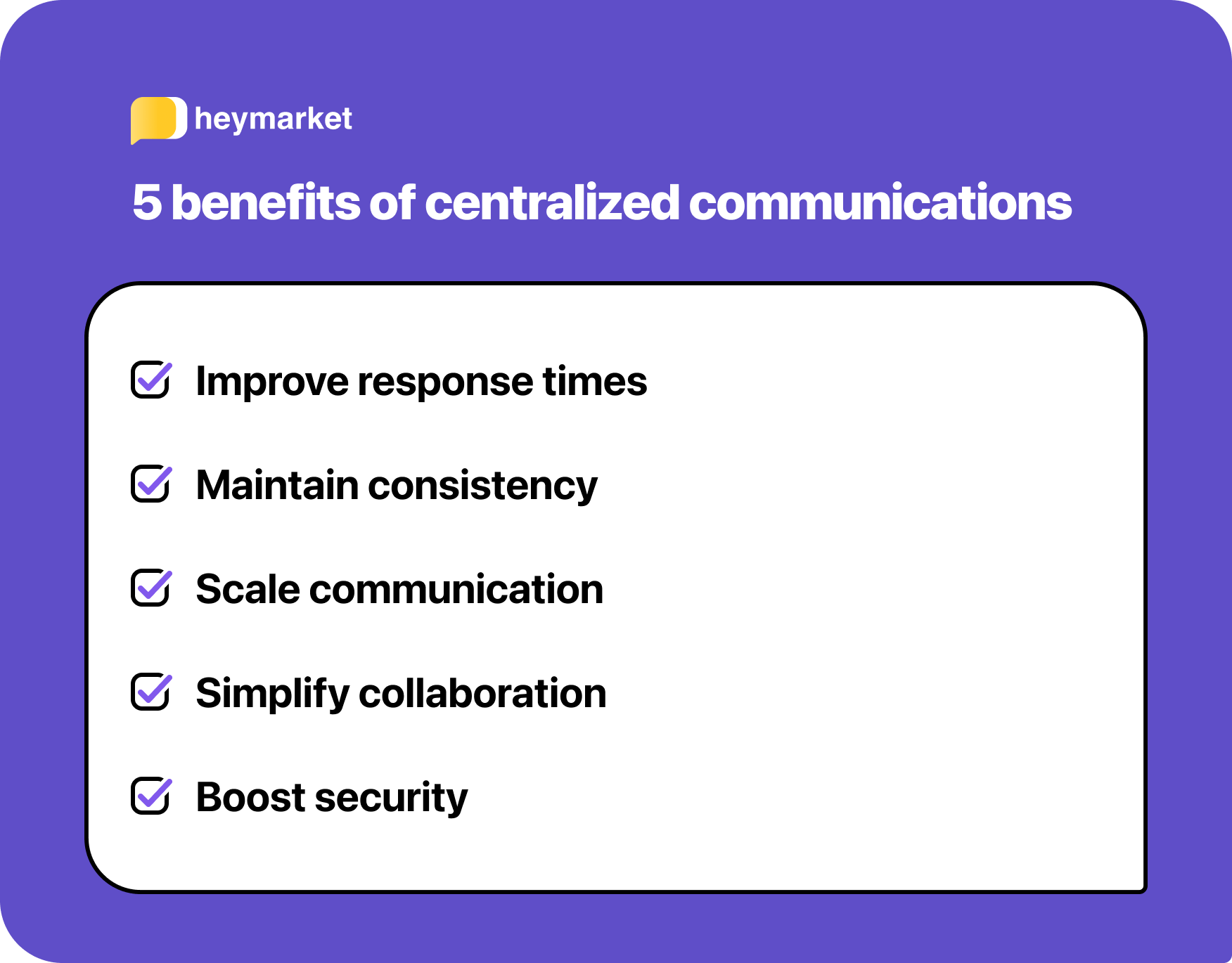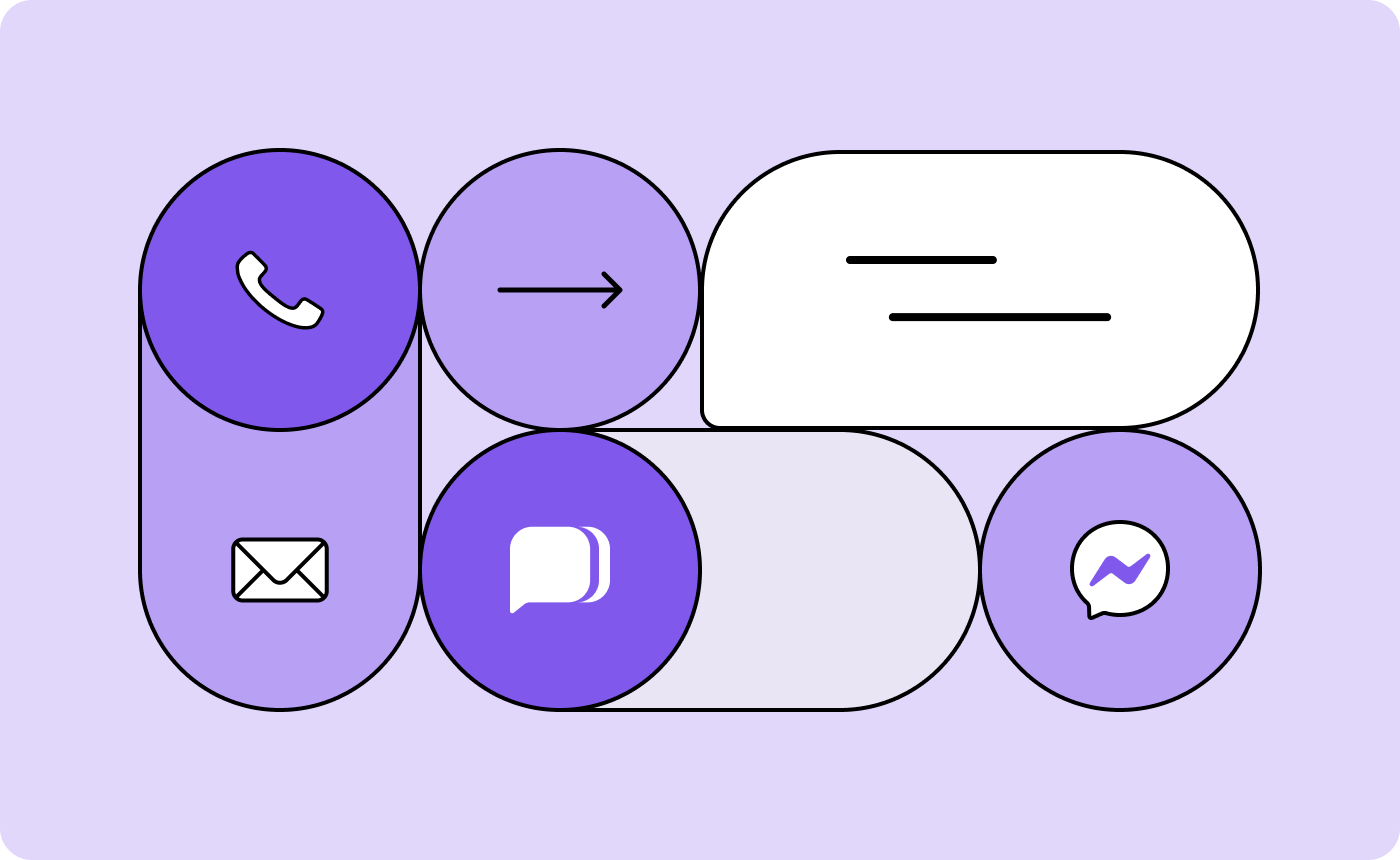Today’s business communication is high-volume, high-stakes, and spread across a growing number of channels. Teams engage customers through email, SMS, web chat, and social platforms like Instagram, Facebook Messenger, and WhatsApp. They also coordinate internally through platforms like Slack and Microsoft Teams.
These conversations power everything from sales and marketing to customer service and operations. But without the right tools, they unfold in silos that eliminate context and slow resolution times, leading to inconsistent customer experiences.
By centralizing internal and external communications into a single, connected platform, teams quickly solve these challenges. With shared visibility and a complete view of each interaction, they can respond faster, collaborate more easily, and deliver stronger outcomes.
What is centralized communication?
Centralized communication is the practice of managing all business messaging—from customer conversations to internal collaboration—within a single platform. Instead of bouncing between disconnected tools, teams can view and respond to every message in one place, regardless of the channel.

This unified approach ensures that everyone has access to the full conversation history, including who said what, when, and on which platform. That shared context helps teams move faster, avoid duplicate efforts, and deliver more consistent customer experiences.
Whether it’s an email thread, a text message, a live chat, or a social DM, centralized communication turns isolated exchanges into coordinated conversations.
Why centralizing communication matters
In business messaging, every conversation is an opportunity—whether it’s nurturing a lead, resolving a support issue, or helping a buyer over the finish line. But if you don’t meet your customers on their preferred channels, you risk missing those moments altogether.
Centralized communication makes it easier to be where your customers are. By unifying your channels, you bring every message into one shared system. That way, your team can stay organized, aligned, and ready to respond.
Here’s how centralized business communication helps teams deliver stronger outcomes.
1. Helps teams respond faster
When every channel feeds into a single omnichannel shared inbox, your team doesn’t have to chase down messages across platforms. Centralized communication keeps everything in one place, ensuring no incoming messages are missed and response times are optimal.
2. Maintain message consistency
Centralized platforms give every team member access to full customer conversation histories, regardless of channel. That context helps teams deliver more consistent messaging, even across departments or shifts.
3. Scales operations without scaling overhead
With all communication in one place, each team member can handle a higher volume of messages without sacrificing efficiency and accuracy. Without channel silos, you can grow your reach without increasing staffing costs or investing in additional software.
4. Simplifies internal coordination
Centralized systems make it easier for teams to collaborate on active conversations. Features like conversation assignments, shared notes, and internal comments help everyone stay aligned, without breaking focus or duplicating work.
5. Boosts security and access control
A centralized system makes it easier to manage who has access to sensitive conversations. With features like role-based permissions, administrative controls, and audit logs, modern centralized communication platforms help businesses maintain data security, enforce compliance, and build trust with customers.

How to centralize your communications
Centralizing communication means unifying customer-facing channels—like SMS, email, live chat, and social messaging—into a single platform. This gives your team a shared workspace to manage every conversation in one place, with the full context of each interaction.
You can make this shift by adopting an omnichannel platform that brings everything into one inbox and connects with tools your team already uses, like CRMs, help desks, or ecommerce platforms. That way, when a message comes in, it’s paired with helpful context like customer details, past conversations, and internal notes.
Modern omnichannel platforms let teams manage SMS, email, and messaging apps side by side. Teammates can assign conversations, collaborate with internal comments, and rely on synced CRM data to stay accurate and efficient.
Centralization also enables automation, routing, and campaign tracking, making it easier to scale communication without sacrificing quality.
The result is a more organized, context-rich inbox that helps your team move faster, collaborate effectively, and deliver better service across every channel.
Centralized communication: A more connected way to communicate
As customer expectations grow and communication channels multiply, managing conversations in silos simply doesn’t scale anymore. Centralized communication offers a smarter way forward, helping teams stay aligned, respond faster, and deliver a more consistent experience across every touchpoint.
With modern omnichannel platforms offering secure, integrated solutions for every channel from SMS to email, centralizing communication is an easy, high-impact upgrade for any team ready to work more efficiently.
Ready to start centralizing your communication? Learn more about Heymarket’s features or start your free trial today.





